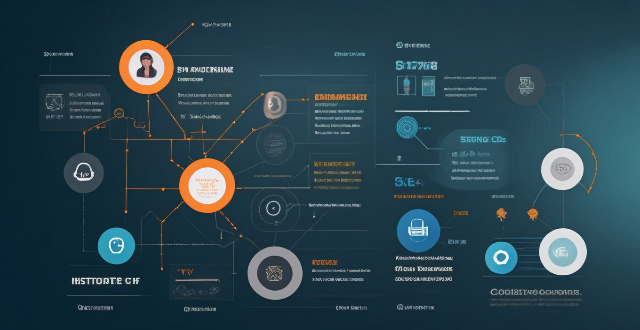Make Marketing

What makes a good influencer for marketing purposes ?
Influencer marketing has become an increasingly popular strategy for brands to reach their target audience. A good influencer can help a brand build trust, increase brand awareness, and drive sales. But what exactly makes a good influencer for marketing purposes? In this article, we will explore the key factors that make an influencer effective in promoting a brand. The key factors that make a good influencer for marketing purposes include authenticity, relevance, engagement rate, creativity, and trustworthiness. An effective influencer should be genuine and authentic in their interactions with their followers, have a strong connection with the brand's target audience, have a high engagement rate among their followers, be creative in producing unique and visually appealing content, and be trustworthy in providing reliable information and honest reviews. By partnering with an influencer who embodies these qualities, brands can effectively reach their target audience and achieve their marketing goals. It is important to note that quality over quantity is key when it comes to choosing an influencer for marketing purposes.

What are the benefits of influencer marketing ?
Influencer marketing offers benefits such as increased brand awareness, targeted audience reach, cost-effective marketing, trust building, content creation and distribution, and long-term partnerships.

What is digital marketing ?
Digital marketing is the use of digital channels to promote products or services. Key elements include SEO, social media marketing, email marketing, content marketing, PPC advertising, affiliate marketing, online PR, data analytics, mobile marketing, and influencer marketing. Benefits of digital marketing include cost-effectiveness, targeted audience reach, measurable results, global reach, and personalization.

What is influencer marketing ?
Influencer marketing is a type of social media marketing that involves partnering with influencers—individuals who have a large following on social media platforms—to promote a brand, product, or service. This marketing strategy has become increasingly popular in recent years due to its effectiveness in reaching targeted audiences and generating high engagement rates. An influencer is someone who has established credibility within a specific industry or niche. They have a significant following on social media platforms such as Instagram, YouTube, Twitter, or Facebook and are often considered experts in their field. Influencers can be bloggers, vloggers, celebrities, or even everyday people who have gained a substantial following for their content. Influencer marketing works by leveraging the trust and influence that these individuals have built with their followers. Brands partner with influencers to promote their products or services, hoping that the influencer's endorsement will persuade their followers to make a purchase or take some other desired action. The influencer typically creates content featuring the brand's product or service, which is then shared with their followers across various social media platforms. Benefits of influencer marketing include targeted audience reach, increased trust and credibility, higher conversion rates, and cost-effectiveness compared to traditional advertising methods. However, there are also challenges such as authenticity concerns, measurement difficulties, and potential reputation risks associated with partnering with an influencer. To maximize the effectiveness of your influencer marketing campaigns, consider implementing best practices such as choosing the right influencer whose values align with your brand and who has a strong presence among your target audience; setting clear goals; providing creative freedom; and monitoring and evaluating performance through key metrics like engagement rates, website traffic, and sales. By understanding how it works and implementing best practices, businesses can leverage this powerful tool to drive growth and success in today's digital landscape.

How can small businesses effectively use digital marketing ?
This text offers a comprehensive guide for small businesses to effectively utilize digital marketing. It outlines six strategies: developing a strong online presence through website, social media, and content marketing; leveraging local SEO by optimizing Google My Business listings and incorporating local keywords; investing in pay-per-click advertising with targeted ads and retargeting; harnessing email marketing by building lists and segmenting them for personalized communication; collaborating with influencers for expanding brand reach and credibility; and tracking performance using analytics tools, A/B testing, and customer feedback. The article emphasizes the importance of staying updated with digital trends and maintaining a consistent brand image across all platforms.

How to avoid common mistakes in influencer marketing ?
Avoiding Common Pitfalls in Influencer Marketing: Effective strategies include choosing the right influencers, setting clear objectives, providing a creative brief, monitoring campaign performance, maintaining open communication, complying with legal requirements, and preparing for potential issues. By following these steps, brands can enhance their influencer marketing efforts and minimize common mistakes.

How does influencer marketing work ?
Influencer marketing is a type of marketing that involves partnering with individuals who have significant social media followings, known as influencers, to promote products or services. These influencers typically have a strong presence on social media platforms such as Instagram, YouTube, Twitter, and Facebook. They are often seen as experts in their field and have built a loyal following of fans and followers who trust their opinions and recommendations. The process of influencer marketing involves identifying the right influencer for your brand, building a relationship with them, creating content featuring your product or service, promoting the content across various social media platforms, and measuring the results of the campaign. Benefits of influencer marketing include increased brand awareness, higher engagement rates, trusted recommendations, and cost-effectiveness compared to traditional advertising methods.

How important is SEO in digital marketing ?
The text discusses the significance of SEO in digital marketing, highlighting its role in increasing visibility, cost-effectiveness, high conversion rates, long-term results, competitive edge, measurable outcomes, user experience improvement, and attracting local customers. It emphasizes that SEO is a crucial strategy for businesses to establish a strong online presence and compete effectively in the digital marketplace, contributing to both short-term and long-term success in digital marketing endeavors.

What are the benefits of using digital marketing for a business ?
The text discusses the advantages of digital marketing for businesses, which include improved targeting, cost-effectiveness, increased brand awareness, better customer engagement, and measurable results. It highlights that digital marketing allows companies to reach their ideal customers more effectively, save money compared to traditional marketing techniques, promote their brand consistently online, engage with customers on a deeper level, and track the performance of their campaigns for continuous improvement.

What is mobile marketing and why is it important ?
Mobile marketing is the use of mobile devices to promote products or services. It involves sending targeted messages, offers, and advertisements to users who are on the move, in real-time. This type of marketing can be done through various channels including SMS, email, social media, apps, and mobile websites. Mobile marketing is important for several reasons: 1. Reach a Wider Audience: With the increasing popularity of mobile devices, businesses can reach a larger audience through mobile marketing. 2. Higher Engagement Rates: People spend more time on their mobile devices than any other medium, making them more likely to engage with your content and respond to your calls-to-action. 3. Increased Conversion Rates: Mobile marketing allows businesses to target their audience based on location, behavior, and preferences, resulting in higher conversion rates. 4. Improved Customer Loyalty: By providing personalized experiences and offers through mobile marketing, businesses can build stronger relationships with their customers and increase loyalty. 5. Cost-Effective: Compared to traditional marketing methods, mobile marketing is often more cost-effective with a higher return on investment (ROI). 6. Real-Time Tracking and Analytics: Mobile marketing provides businesses with real-time data and analytics about their campaigns, allowing them to make informed decisions and optimize their strategies for better results. 7. Enhanced Brand Recognition: By using mobile marketing, businesses can create a strong brand identity and increase brand recognition among their target audience. 8. Stay Ahead of the Competition: As more businesses adopt mobile marketing strategies, those who do not will fall behind. Staying ahead of the competition is crucial for long-term success.

What is content marketing and how does it fit into a digital marketing strategy ?
Content marketing is a strategic approach to marketing that focuses on creating and distributing valuable, relevant, and consistent content to attract and engage a clearly defined audience. It involves the creation of various forms of content such as blogs, videos, social media posts, e-books, infographics, etc., which are designed to be helpful, informative, or entertaining for the target audience. The ultimate goal of content marketing is to convert prospects into customers by establishing a brand as a trustworthy authority in its field. Key elements of content marketing include quality content, targeted audience, strategic distribution, consistency, and call to action. Content marketing plays a central role in digital marketing strategy as it is often the foundation upon which other digital marketing activities are built. It integrates with different elements of digital marketing such as SEO, social media marketing, email marketing, pay-per-click advertising, conversion rate optimization, analytics and reporting, public relations and brand image, customer retention and loyalty, and multichannel experience.

How has digital marketing changed the way businesses operate ?
Digital marketing has revolutionized the way businesses operate by providing increased reach, better insights, cost-effectiveness, improved engagement, and real-time results. It allows businesses to connect with a global audience through various digital channels, track customer behavior and preferences, control their marketing budgets, build stronger relationships with customers, and monitor the success of their campaigns in real-time. As technology continues to evolve, it will be interesting to see how digital marketing further impacts business operations in the future.

How do you optimize your website for digital marketing ?
The article discusses the importance of optimizing a website for digital marketing. It outlines six key strategies to consider: understanding your audience, search engine optimization (SEO), user experience (UX), content marketing, social media integration, and conversion rate optimization (CRO). Each strategy is explained with specific actions that businesses can take to improve their website's performance in terms of attracting and retaining customers. The article emphasizes the need for research, data analysis, and continuous testing and improvement to ensure the best possible user experience and conversion rates.

How to use influencer marketing for B2B companies ?
Influencer marketing can be an effective strategy for B2B companies, but it requires careful planning and execution. Here are some tips on how to use influencer marketing for B2B companies: 1. Identify the right influencers in your industry who have a strong presence on social media and are respected by other professionals. 2. Build relationships with potential influencers by following them on social media, engaging with their content, and sharing their posts with your followers. 3. Create high-quality content that showcases your expertise and provides value to their audience. 4. Offer incentives like free products, exclusive access to events or resources, or payment for sponsored content to encourage influencers to promote your brand. 5. Collaborate with influencers on projects like co-creating content, hosting webinars together, or partnering on product development. 6. Measure the results of your influencer marketing efforts by tracking metrics like engagement rates, website traffic, leads generated, and sales closed to determine whether the campaign was successful.

What is influencer marketing and how does it work ?
Influencer marketing involves partnering with individuals who have significant social media followings to promote products or services. The goal is to leverage the trust and loyalty that these influencers have built with their followers to increase brand awareness and drive sales. The process includes identifying the right influencers, building relationships, creating content, and promoting and tracking results. Benefits of influencer marketing include increased brand awareness, higher engagement rates, improved trust and credibility, and cost-effective marketing.

Can influencer marketing replace traditional advertising ?
The text discusses whether influencer marketing can replace traditional advertising. It lists the advantages of influencer marketing as authenticity, targeted audience, and cost-effectiveness but also mentions its disadvantages such as lack of control, short-term impact, and a saturated market. Traditional advertising, on the other hand, has the advantage of wide reach, control over messaging, and long-term impact, but its disadvantages include high costs, declining engagement, and limited targeting. The text concludes that both strategies should be used together for maximum effectiveness.

What are the latest trends in influencer marketing ?
Influencer marketing has become an essential part of modern marketing strategies. The latest trends in influencer marketing include micro-influencers, user-generated content (UGC), virtual influencers, collaborative campaigns, inclusivity and diversity, interactive content, and influencer marketing analytics. Brands need to stay updated on these trends to remain competitive and effectively reach their target audience.

What are the latest trends in social media marketing ?
Social media marketing trends businesses should consider include personalization, video marketing, influencer marketing, social listening, and shoppable posts. Personalization helps brands connect with their audience on a more personal level, while video marketing allows for visually engaging content that can lead to higher engagement rates. Influencer marketing enables businesses to reach new audiences and build trust, while social listening provides insights into consumer sentiment and identifies opportunities for improvement. Shoppable posts streamline the purchasing process and increase conversion rates.

What are the challenges faced by businesses in digital marketing ?
The text discusses the various challenges faced by businesses in digital marketing, including staying up-to-date with technology, data privacy and security concerns, generating measurable results, content creation and management, search engine optimization (SEO), social media marketing, customer acquisition and retention, adapting to consumer behavior, budgeting and resource allocation, and lack of expertise. Addressing these challenges proactively can improve digital marketing efforts and achieve better results online.

What is the impact of sports marketing on consumer behavior ?
Sports marketing is a powerful tool that can significantly influence consumer behavior by increasing brand awareness, creating emotional connections with consumers, targeting specific demographics effectively, influencing purchase decisions, and engaging with consumers through social media platforms. This multifaceted impact can lead to increased sales, customer loyalty, and business growth for companies that leverage the power of sports marketing effectively.

What are the most effective strategies for social media marketing ?
Effective Strategies for Social Media Marketing Social media marketing is crucial for modern businesses to connect with customers, build brand awareness, and increase sales. To achieve these goals, it's important to define your objectives, understand your audience, choose the right platforms, create engaging content, use visuals, leverage influencers, monitor performance, and stay active and engaged with your audience. By implementing these strategies, businesses can create a successful social media marketing strategy that drives results and builds long-term relationships with customers.

How do you use data analytics to improve your digital marketing efforts ?
In the digital age, data analytics has become an indispensable tool for improving marketing strategies. By analyzing consumer behavior and preferences, businesses can tailor their marketing efforts to better suit their target audience, ultimately leading to increased engagement and conversion rates. To improve your digital marketing efforts using data analytics, follow these steps: 1. Identify Key Performance Indicators (KPIs) based on your marketing objectives such as increasing website traffic or boosting sales. 2. Collect and analyze data using tools like Google Analytics and social media analytics platforms to identify trends and areas for improvement. 3. Optimize your marketing strategy by adjusting content, creating targeted campaigns, and refining ad spend based on performance. 4. Continuously test and refine your approach through A/B testing and iterating based on results to optimize performance. By integrating data analytics into your digital marketing efforts, you gain valuable insights that allow you to make informed decisions and optimizations. This systematic approach not only enhances the effectiveness of your marketing campaigns but also helps you stay ahead in a competitive market. Remember, the key is to continuously monitor, analyze, and adapt based on the data you collect.

How can I measure the ROI of my social media marketing efforts ?
Measuring the return on investment (ROI) of your social media marketing efforts is crucial for understanding the effectiveness of your campaigns and making data-driven decisions. Here's a step-by-step guide to help you measure the ROI of your social media marketing efforts: 1. Set clear goals for your social media marketing campaigns. These goals should be specific, measurable, achievable, relevant, and time-bound (SMART). Some common goals include increasing brand awareness, generating leads, driving website traffic, and boosting sales. 2. Identify the key performance indicators (KPIs) that will help you measure your progress towards achieving those goals. Some common KPIs for social media marketing include engagement rate, reach, click-through rate, and conversion rate. 3. Use analytics tools to track your KPIs and monitor your campaign's performance. Most social media platforms offer built-in analytics tools, and there are also third-party tools like Google Analytics, Hootsuite, and Sprout Social that provide more detailed insights into your social media marketing efforts. 4. Calculate your ROI by comparing the revenue generated by your social media marketing campaigns to the costs associated with those campaigns. Use the formula: ROI = (Revenue - Cost) / Cost x 100%. For example, if your social media marketing campaign generates $5000 in revenue and costs $2000 to run, your ROI would be 150%. This means that for every dollar spent on your social media marketing campaign, you earned $1.50 in return. 5. Analyze and optimize your results to identify areas for improvement and optimize your future campaigns accordingly. If your ROI is lower than expected, consider adjusting your targeting, messaging, or ad spend to improve your results. Remember that measuring the ROI of your social media marketing efforts is an ongoing process. Continuously track your KPIs, analyze your results, and make data-driven decisions to maximize the effectiveness of your campaigns.

What are the latest trends in digital marketing ?
The article discusses the latest trends in digital marketing, including personalization, voice search optimization, video marketing, influencer marketing, chatbots and AI, and social media stories. Personalization involves using data analytics to create personalized experiences for customers, while voice search optimization requires optimizing content for voice search by using long-tail keywords and natural language. Video marketing is a popular trend that involves engaging with the audience through video content, while influencer marketing allows brands to tap into an influencer's loyal following to promote their products or services. Chatbots and AI are being used to automate customer service tasks and provide personalized recommendations to customers. Social media stories have become a popular way for brands to connect with their audience through short-form content that disappears after 24 hours. The article concludes that staying up-to-date with these trends is essential for any business looking to succeed online.

How do you measure the success of a sports marketing campaign ?
Measuring the success of a sports marketing campaign is crucial. Metrics include increased brand awareness, improved sales and revenue, customer loyalty, enhanced brand image, media coverage, sponsorship value, and positive stakeholder feedback. These metrics provide insights for adjusting strategies.

How do you create a successful social media marketing campaign ?
Creating a successful social media marketing campaign requires a strategic approach that involves careful planning, execution, and monitoring. The key steps include defining goals, knowing your audience, choosing the right platforms, creating compelling content, utilizing paid advertising, engaging and interacting with your audience, and monitoring and analyzing performance. By following these steps, you can create a successful social media marketing campaign that not only meets your objectives but also establishes a strong online presence for your brand.

What are the key steps to take when planning a career in sports marketing ?
Planning a career in sports marketing involves obtaining a bachelor's degree, specializing in the field, gaining experience through internships or volunteering, building a professional network, developing key skills like communication and analysis, and staying updated with industry trends.

How to ensure ethical practices in influencer marketing ?
Influencer marketing has become a popular strategy for brands to reach their target audience. However, it is essential to ensure ethical practices in this form of marketing to maintain trust and credibility with consumers. Here are some tips on how to ensure ethical practices in influencer marketing: 1. Disclose relationships between the brand and the influencer. 2. Choose relevant influencers who align with your brand values and have a genuine interest in your product or service. 3. Set clear guidelines for influencers regarding what they can and cannot do when promoting your brand. 4. Regularly monitor influencer content to identify any issues or concerns early on. 5. Foster transparency and honesty in all aspects of influencer marketing.

How do you create an effective sports marketing strategy ?
Creating an effective sports marketing strategy requires a deep understanding of the target audience, the sports industry, and the brand's goals. Here are some steps to follow: 1. Identify the Target Audience: Research demographics, interests, and behaviors of potential customers. 2. Define the Brand's Goals: Set specific, measurable, achievable, relevant, and time-bound (SMART) goals. 3. Conduct Market Research: Analyze competitors, trends, and consumer preferences, and identify opportunities for partnerships or sponsorships. 4. Develop a Unique Selling Proposition (USP): Highlight the brand's strengths and benefits that resonate with the target audience. 5. Create a Marketing Mix: Tailor advertising, public relations, promotions, and sponsorships to the target audience and align with the brand's goals. 6. Measure and Evaluate Results: Track key performance indicators (KPIs) such as website traffic, social media engagement, and sales revenue to identify areas for improvement and inform future marketing strategies.

Can you recommend any online learning resources for digital marketing ?
The recommended online learning resources for digital marketing include Coursera, Udemy, HubSpot Academy, LinkedIn Learning, and Skillshare. These platforms offer courses on various aspects of digital marketing, such as search engine optimization (SEO), social media marketing, branding, customer engagement, data-driven marketing, content creation, paid advertising strategies, building a strong online presence, creating compelling visuals and copywriting for social media ads, inbound marketing methodologies, creating valuable content, developing a successful content strategy, core principles of digital marketing, advanced social media tactics, growth hacking techniques, email marketing fundamentals, and more. These resources provide learners with practical tools, frameworks, and real-world examples to apply in their work.